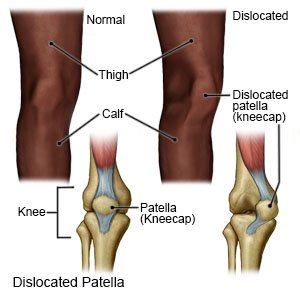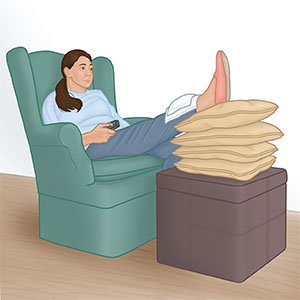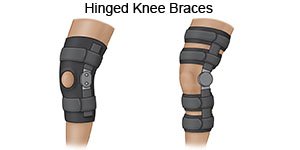Patellar Dislocation
Medically reviewed by Drugs.com. Last updated on Aug 4, 2025.
A patellar dislocation occurs when your patella (kneecap) is forced out of place.
 |
DISCHARGE INSTRUCTIONS:
Seek care immediately if:
- Your kneecap dislocates again.
- You have severe pain and swelling in your knee.
Call your doctor or orthopedist if:
- You have more knee pain.
- Your knee feels like it is going to give out.
- You have questions or concerns about your condition or care.
Medicines:
You may need any of the following:
- NSAIDs , such as ibuprofen, help decrease swelling, pain, and fever. This medicine is available with or without a doctor's order. NSAIDs can cause stomach bleeding or kidney problems in certain people. If you take blood thinner medicine, always ask if NSAIDs are safe for you. Always read the medicine label and follow directions. Do not give these medicines to children younger than 6 months without direction from a healthcare provider.
- Acetaminophen decreases pain and fever. It is available without a doctor's order. Ask how much to take and how often to take it. Follow directions. Read the labels of all other medicines you are using to see if they also contain acetaminophen, or ask your doctor or pharmacist. Acetaminophen can cause liver damage if not taken correctly.
- Prescription pain medicine may be given. Ask your healthcare provider how to take this medicine safely. Some prescription pain medicines contain acetaminophen. Do not take other medicines that contain acetaminophen without talking to your healthcare provider. Too much acetaminophen may cause liver damage. Prescription pain medicine may cause constipation. Ask your healthcare provider how to prevent or treat constipation.
- Take your medicine as directed. Contact your healthcare provider if you think your medicine is not helping or if you have side effects. Tell your provider if you are allergic to any medicine. Keep a list of the medicines, vitamins, and herbs you take. Include the amounts, and when and why you take them. Bring the list or the pill bottles to follow-up visits. Carry your medicine list with you in case of an emergency.
Manage a patellar dislocation:
- Apply ice. Ice helps decrease swelling and pain, and may help prevent tissue damage. Use an ice pack, or put crushed ice in a plastic bag. Cover it with a towel and place it on your knee for 15 to 20 minutes every hour or as directed.
- Elevate your knee above the level of your heart as often as you can. This will help decrease swelling and pain. Prop your leg on pillows or blankets to keep your knee elevated comfortably.

- Prevent your knee from moving for up to 6 weeks or as directed. Your healthcare provider may put on a cast or splint. You may need to wear a leg brace to stabilize your knee. A leg brace can be adjusted to increase your range of motion as your knee heals.

- Use crutches if directed. Your healthcare provider may tell you not to put weight on your injured knee. Your provider will show you how to use crutches. You may need them for 4 to 6 weeks.
- Go to physical therapy if directed. A physical therapist can teach you exercises to increase the range of motion in your knee. Exercises make your knee stronger, increase balance, and decrease pain. You may also need to strengthen your stomach, back, hip, and leg muscles. You may be told to continue these exercises after physical therapy ends to help prevent another dislocation.
Follow up with your doctor or orthopedist within 2 weeks or as directed:
Write down your questions so you remember to ask them during your visits.
© Copyright Merative 2025 Information is for End User's use only and may not be sold, redistributed or otherwise used for commercial purposes.
The above information is an educational aid only. It is not intended as medical advice for individual conditions or treatments. Talk to your doctor, nurse or pharmacist before following any medical regimen to see if it is safe and effective for you.
Further information
Always consult your healthcare provider to ensure the information displayed on this page applies to your personal circumstances.
